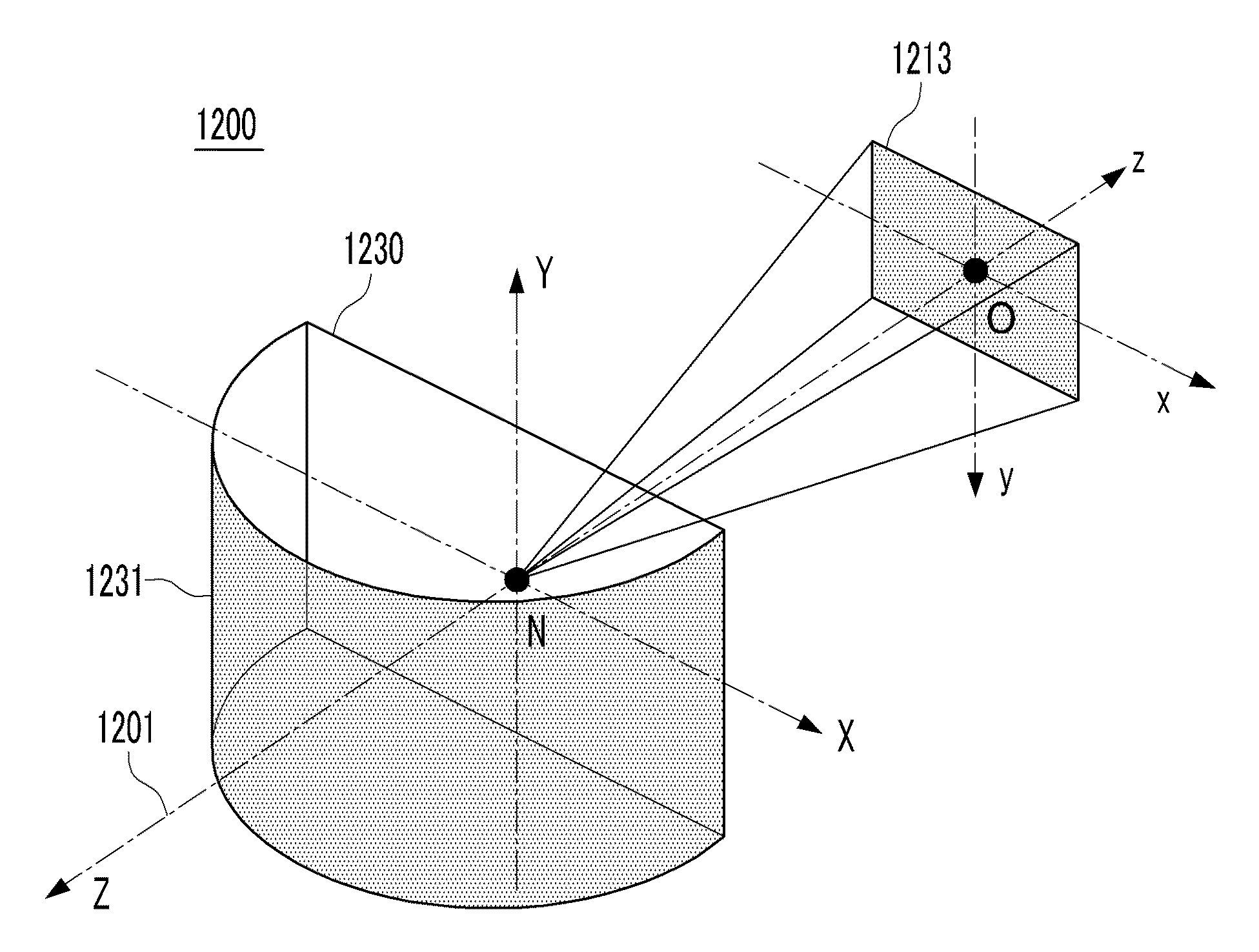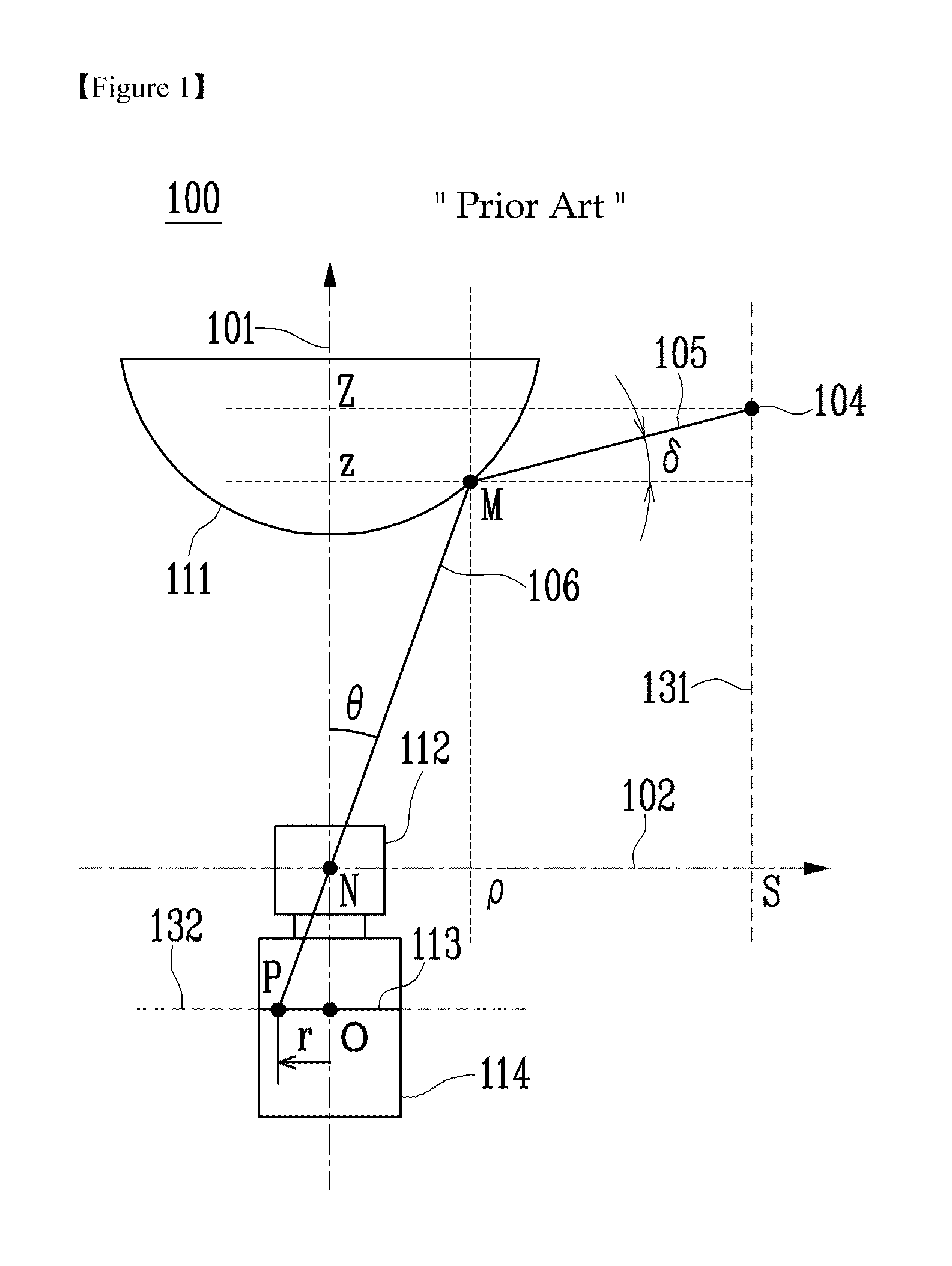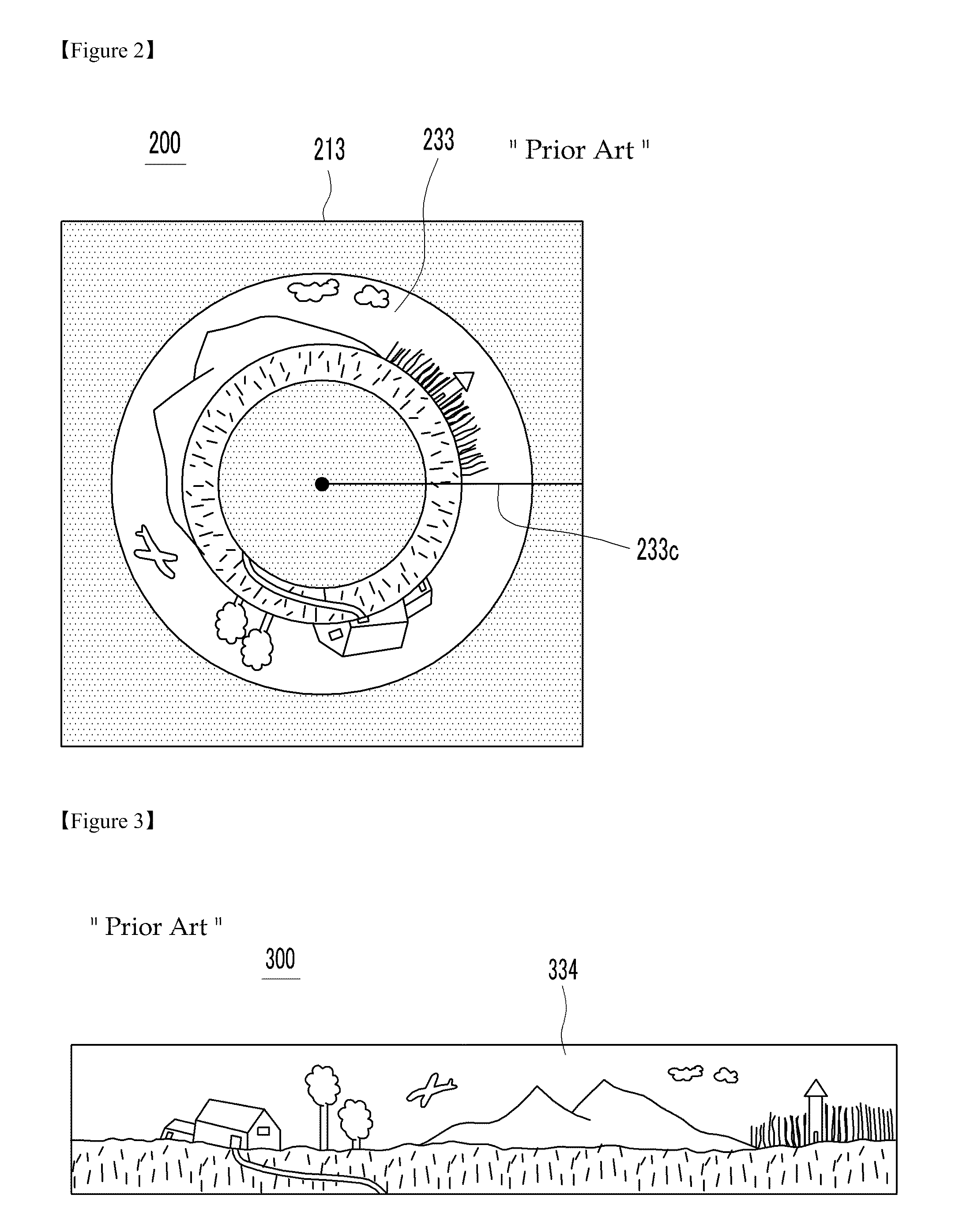Methods of obtaining panoramic images using rotationally symmetric wide-angle lenses and devices thereof
a technology of rotational symmetry and wide-angle lens, which is applied in the field of mathematically precise image processing methods of extracting panoramic images, can solve the problems of less than 50% of pixel utilization, inefficient use of pixels, and large number of unused pixels in the image sensor, so as to achieve accurate image processing the effect of images
- Summary
- Abstract
- Description
- Claims
- Application Information
AI Technical Summary
Benefits of technology
Problems solved by technology
Method used
Image
Examples
first embodiment
[0125]FIG. 12 is a schematic diagram for understanding the field of view and the projection scheme of a panoramic imaging system according to the first embodiment of the present invention. The panoramic imaging system of the current embodiment is assumed as attached on a vertical wall(1230), which is perpendicular to the ground plane. The wall coincides with the X-Y plane, and the Y-axis runs from the ground plane (i.e., X-Z plane) to the zenith. The origin of the coordinate is located at the nodal point N of the lens, and the optical axis(1201) of the lens coincides with the Z-axis (in other words, it is parallel to the ground plane). Hereinafter, this coordinate system is referred to as the world coordinate system. The world coordinate system is a coordinate system for describing the environment around the camera that is captured by the lens, and it is a right-handed coordinate system.
[0126]In a rigorous sense, the direction of the optical axis is the direction of the negative Z-a...
second embodiment
[0209]As has been stated previously, a cylindrical projection scheme in the strict sense of the words is not used widely. Although it provides a mathematically most precise panoramic image, the image does not appear natural to the naked eye when the vertical FOV (i.e., Δδ=δ2−δ1) is large.
[0210]The cylindrical projection scheme of the first embodiment can be generalized as follows. The lateral coordinate x″ on the processed image plane is proportional to the horizontal incidence angle. Therefore, as in the first embodiment, a relation given in Eq. 75 holds.
A=WΔψ=x″ψ[MathFigure75]
[0211]On the other hand, the longitudinal coordinate y″ on the processed image plane is proportional to a monotonic function of the vertical incidence angle as given in Eq. 76.
y″∝F(δ) [Math Figure 76]
[0212]Here, F(δ) is a continuous and monotonic function of the vertical incidence angle δ. Therefore, a relation given by Eq. 77 corresponding to the Eq. 22 holds as follows.
A=HF(δ2)-F(δ1)=y″F(δ)[MathFigure77]
[0...
third embodiment
[0232]Field of view of typical wide-angle lenses used in security and surveillance area is 90° at the maximum, and a security lens having this amount of FOV generally exhibits a considerable degree of distortion. A lens having a FOV larger than this is not widely used because such a lens exhibits excessive distortion and causes psychological discomfort.
[0233]FIG. 34 is a conceptual drawing of an imaging system(3400) for monitoring the entire interior space using a typical wide-angle camera having a FOV near 90°. Usually, security cameras must be installed at a high place that is out of reach from the people. Therefore, in order to monitor the entire interior place while kept out of reach from the people, the camera(3410) is installed at a corner where the ceiling and two walls meet, and camera is facing down toward the interior. The optical axis(3401) of the camera is inclined both against a horizontal line and a vertical line, and the camera captures the objects(3467) at a slanted ...
PUM
 Login to View More
Login to View More Abstract
Description
Claims
Application Information
 Login to View More
Login to View More - R&D
- Intellectual Property
- Life Sciences
- Materials
- Tech Scout
- Unparalleled Data Quality
- Higher Quality Content
- 60% Fewer Hallucinations
Browse by: Latest US Patents, China's latest patents, Technical Efficacy Thesaurus, Application Domain, Technology Topic, Popular Technical Reports.
© 2025 PatSnap. All rights reserved.Legal|Privacy policy|Modern Slavery Act Transparency Statement|Sitemap|About US| Contact US: help@patsnap.com



